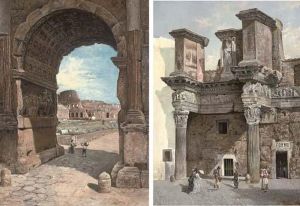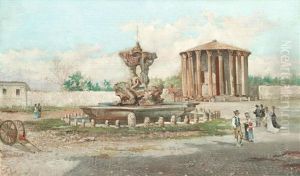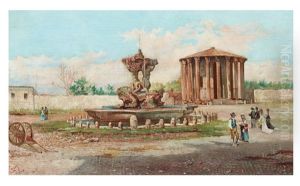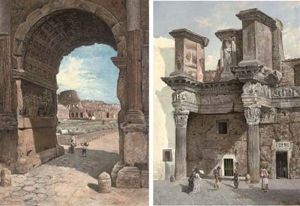George Edwin Ewing Paintings
George Edwin Ewing was a Scottish sculptor, born in 1828 in Edinburgh. He was known for his work in marble and bronze, and he became one of the notable Victorian-era sculptors in Scotland. Ewing's education in the arts began in his hometown, where he was initially apprenticed to a wood carver. However, his talent for sculpting soon became evident, and he pursued further studies at the Trustees' Academy in Edinburgh, which was the leading art school in the city at the time.
Ewing's early works were marked by classical influences and a strong attention to detail, which quickly garnered him a reputation for excellence. He was particularly adept at portraiture and monumental sculpture, often receiving commissions to create statues of prominent figures of his time. One of his notable works is the statue of Adam Black, located in Edinburgh, which exemplifies his skill in capturing the likeness and character of his subjects.
Throughout his career, George Edwin Ewing remained an active and prominent member of the Scottish art community. He was involved in numerous public art projects and was frequently commissioned by various institutions and private patrons. Ewing's work contributed to the cultural landscape of Victorian Scotland, and his sculptures can still be seen in public spaces and collections.
Tragically, Ewing's life and career were cut short when he died in 1884 at the relatively young age of 56. Despite his premature death, he left behind a legacy of work that continues to be appreciated for its craftsmanship and elegance. Ewing's contributions to Scottish art were significant during a period when sculpture was an important means of public commemoration and expression.



